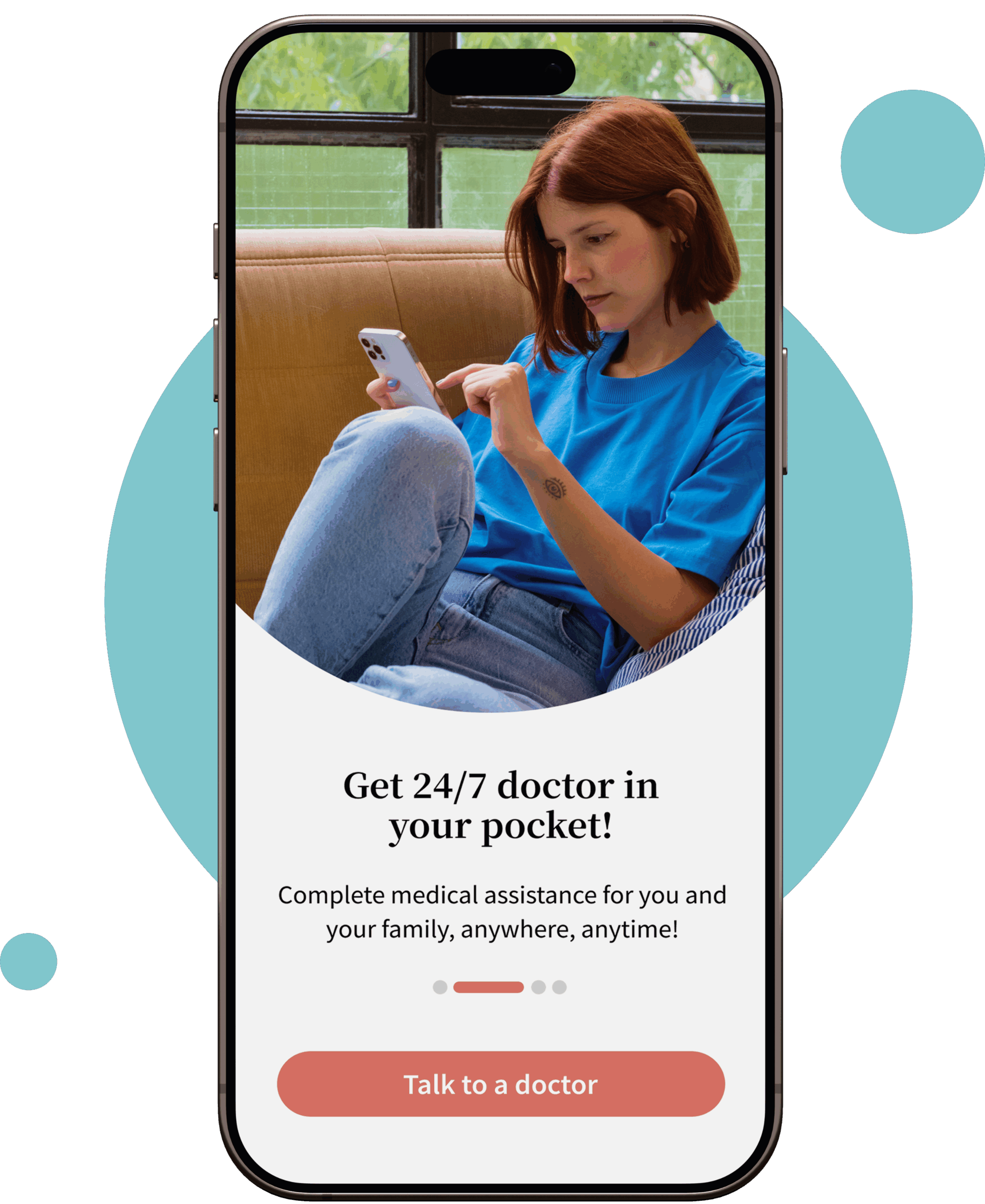Table of Contents
ToggleOverview
Urinary tract infections (UTIs) are prevalent bacterial infections primarily affecting women. The typical symptoms include painful urination or burning and increased urgency to urinate. You have landed on the right page if you have a UTI, require quick relief, and are searching for urinary tract infection treatment.
How do you know if it’s a UTI?
Urinary tract infection is a bacterial infection caused by bacterial incubation of Escherichia Coli (E. coli) in the urogenital areas of the body. Some of the distinguishing symptoms of UTI will tell you whether it’s a UTI or not.
They include :
- Frequent urination (more than usual times)
- More urgency to pee even on an empty bladder.
- Lower back pain on both sides.
- Painful burning sensation while peeing.
- Cloudy urine with a foul smell
- Mucus or white specks while passing stools or urine.
UTI can be very annoying and painful in terms of continuing your daily activities. Frequent urination and smell in your urine can be very discomforting, and you can get rid of them by following some simple lifestyle modifications in just 24 hours.
How to Get Rid of a UTI in 24 Hours
Here is how you can get rid of a UTI in 24 hours:
Visit the doctor
If you are experiencing all the symptoms of the UTI (urinary tract infection), it’s good to see a healthcare provider as soon as possible to get the correct diagnosis and treatment at the right time before it persists and continues to discomfort you.
The healthcare provider will diagnose by performing some sample and blood tests, after which you will be prescribed antibiotics as per your diagnosis.
The best choice of antibiotics for UTI will be discussed later in this article. Keep reading to know all of them.
Drink plenty of water
Water is your one and only friend that will give instant freshness and relief to your stomach and frequent urination. Hydration and drinking plenty of water will not improve how many times you will pee, but it will control the burning sensation down there while peeing.
Take otc medications
Many people take Healthcare providers to suggest Advil or Tylenol for UTIs for pain relief. Phenazopyridine is a popular option that acts as a pain reliever, relieves burning pain, and is another option available as an over-the-counter medication. These measures may help within 24 hours.
Cranberries
Drinking cranberry juice or taking supplements is another popular natural alternative for treating UTIs. Moreover, this idea is based on the fact that cranberry makes your urine more acidic, which aids in eliminating the bacteria causing your infection and promotes healing. Unfortunately, insufficient evidence still supports this claim, but it is still worth a try.
Practice good hygiene
Good hygiene is the key to good health and lifestyle. While cleaning and washing your pubic areas, wiping from front to back helps prevent E. Coli from reaching your private area. Also, emptying your bladder after intercourse helps prevent a bladder infection.
Consume vitamin c
Consumption of Vitamin C works by destroying harmful bacteria due to its acidity. It will also help prevent infection, UTI pain, and bloody urination.
Consume garlic
Garlic is naturally enriched with antibiotic properties. Consuming garlic in the form of teas, dry powder, or in your daily diet. It will help you treat infections better and quickly. Also, keep in mind to take care of the amount you consume of garlic as it might cause an adverse effect if it’s taken in more than the usual amount or for more than 4-5 days.
Wear comfy and loose clothes
Bacteria can grow and replicate in warm and moist places. Comfy and loose clothes will comfort you and allow air to pass through them. Allowing the air to pass through will decrease the alleviated infection and eventually cure it.
Use a heating pad
Heat compression helps relieve abdominal pain and pressure associated with the UTI. It also comforts chronic one-sided pain as well as an acidic urination sensation. It’s good to keep the heating pad or heated water bottle with you when experiencing UTI.
Take probiotics
Once E. Coli gains access to your bladder, it’ll begin reproducing and replacing the good bacteria. Additionally, probiotics help restore the balance of the ‘good’ bacteria and prevent the ‘bad’ ones from multiplying.
UTIs and antibiotics
One way or another, UTIs will be treated with antibiotics due to their causation nature. Following is the list of best antibiotics, along with the pain relief medication.
Commonly prescribed antibiotics used for treating UTIs include:
1. Trimethoprim-sulfamethoxazole (Bactrim DS):
This combination drug contains two antibiotics: trimethoprim and sulfamethoxazole, also known as TMP/SMX. Moreover, it is often the first choice because it rapidly relieves symptoms. However, other options are considered if a person is allergic to sulfa drugs.
Dosage: One double-strength tablet (160 mg of trimethoprim/800 mg of sulfamethoxazole) twice daily for 3-7 days.
Side effects: Some common side effects of TMP/SMX are rash, nausea, and vomiting. Rare but more side effects include dangerous skin conditions such as Stevens-Johnson syndrome (SJS).
2. Nitrofurantoin (Macrobid):
This drug is another first choice for treating UTIs. Nitrofurantoin prevents bacteria from making the DNA material, stopping them from multiplying.
Dosage: 100 mg twice a day for 5-7 days
Side effects: Common side effects include loss of appetite, nausea, and vomiting. Furthermore, more severe side effects include liver conditions like jaundice and hepatitis.
3. Ciprofloxacin (Cipro):
Ciprofloxacin keeps bacteria from copying their DNA and multiplying. It works quickly but is prescribed for minor UTIs as increasing antibacterial resistance is a concern and needs to be addressed while prescribing this medication. Additionally, the risk of severe side effects is higher.
Dosage: 250 mg twice a day for 3-5 days
OR
500mg twice daily for 5-7 days
Side effects: Ciprofloxacin can lead to serious side effects like tendon rupture and can affect your nervous system. Common side effects include diarrhea, nausea, vomiting, or a rash.
4. Fosfomycin (Monurol):
Fosfomycin helps treat UTIs caused by resistant bacteria. It works well against infections that are not treated with the usual antibiotics. In addition, it kills bacteria causing a UTI and prevents them from sticking to the urinary tract lining.
Dosage: A single dose containing 3 grams of fosfomycin powder mixed in water.
Side effects: Fosfomycin can cause nausea, diarrhea, and headaches.
The duration of treatment usually varies from patient to patient and is according to the intensity of the symptoms. Finally, the course of treatment ranges from 3 to 7 days but can be up to 14 days in case of a severe infection.
Related: How To Treat A UTI In Men
Risks of using antibiotics
Risks of using antibiotics for treatment include
- Minor side effects include diarrhea, nausea, vomiting, and sometimes dizziness.
- Antibiotic resistance is long run in case you don’t complete your prescribed regimen.
When to consult a doctor
There are some risks of using antibiotics, so to determine the best course of antibiotics for you, it is best to consult with a health care provider. You can do so by consulting an online doctor at Your Doctors Online. We have the most straightforward way in place for you to get antibiotics and get instant UTI relief. The doctor will prescribe a course of antibiotics delivered to the pharmacy of your choice. No need to wait or suffer; get your UTI medication online immediately!
FAQs About UTIs Answered By Your Doctors Online Team
Simple infections that are not complicated can clear up in 7 days, but it is advisable to take antibiotics if symptoms worsen.
It is best to avoid caffeinated drinks, Artificial sweeteners, and spicy food if you have a UTI.
Antibiotics for UTIs can eliminate the bacteria and resolve the symptoms quickly. Moreover, symptoms improve 1 to 2 days after antibiotics, mainly in people with a UTI.
Some antibiotics commonly prescribed to eliminate a UTI include Amoxicillin, Cephalexin, Ciprofloxacin, Nitrofurantoin, or Trimethoprim/sulfamethoxazole.
Essential oils haven’t been proven to cure a UTI completely. However, cajeput, tea tree, lemongrass, thyme, oregano, and clove oil may help prevent the infection.
If an infection is left untreated, it can progress and lead to pyelonephritis (kidney infection) or sepsis(infection in the bloodstream).







